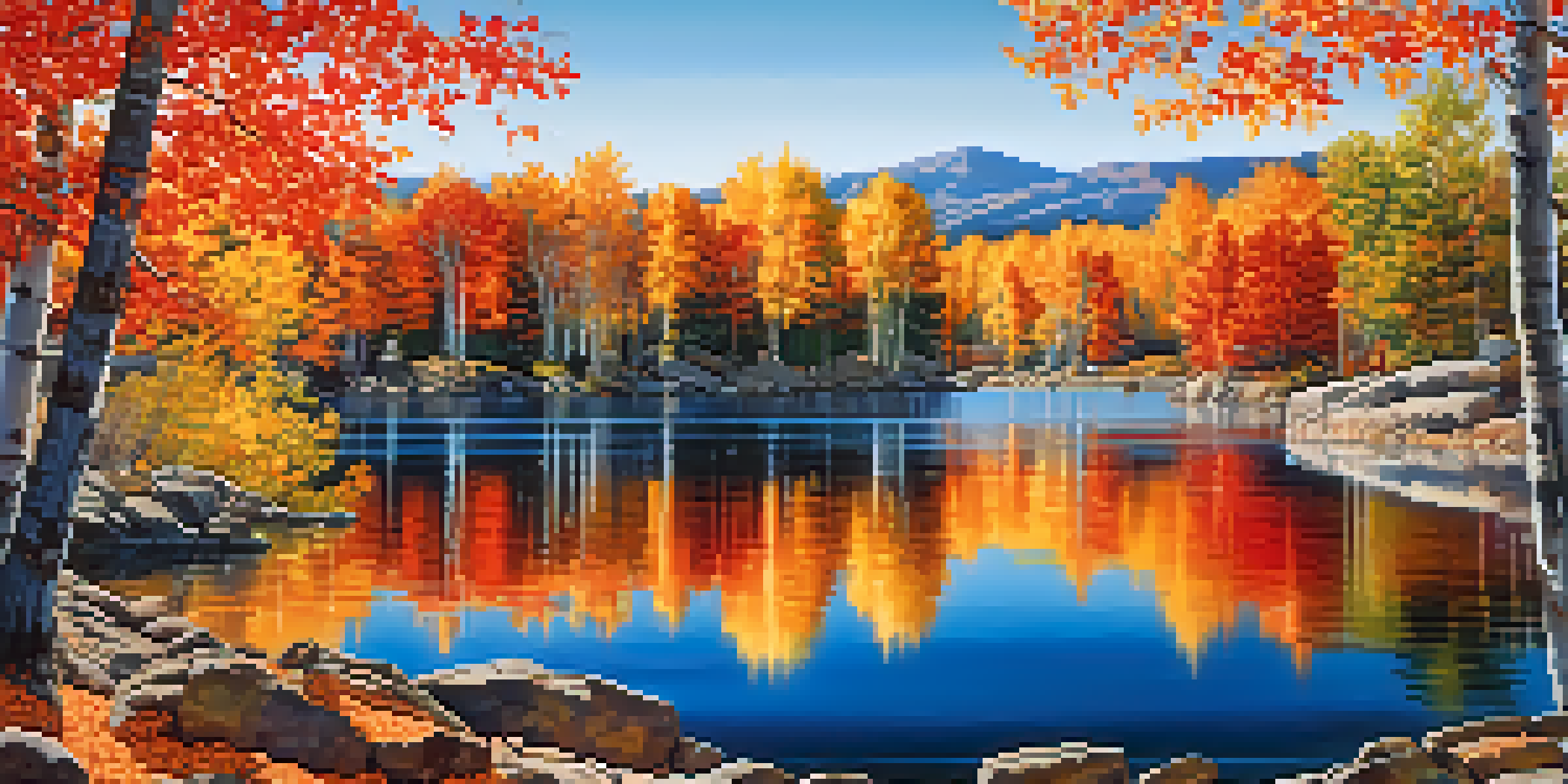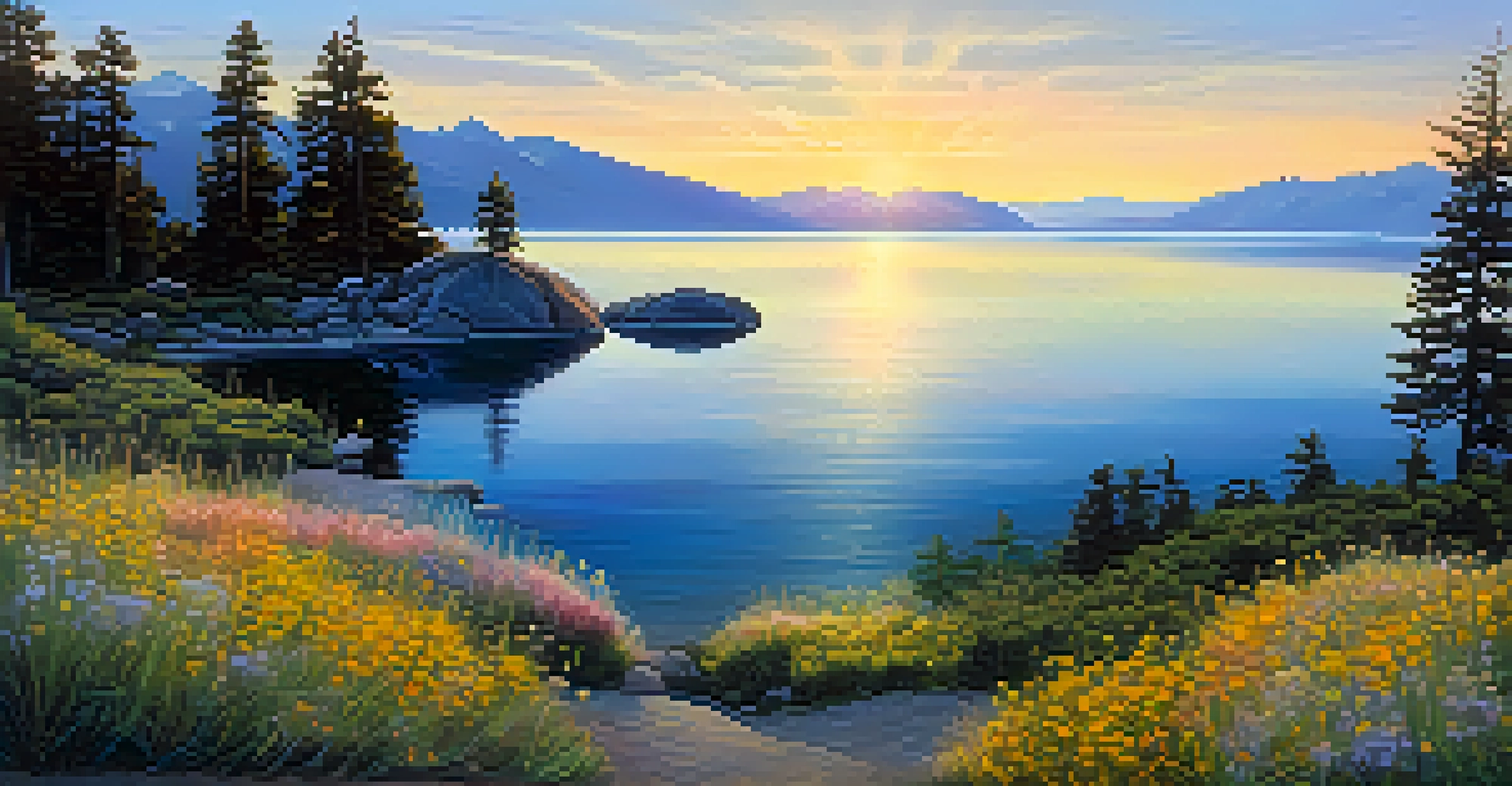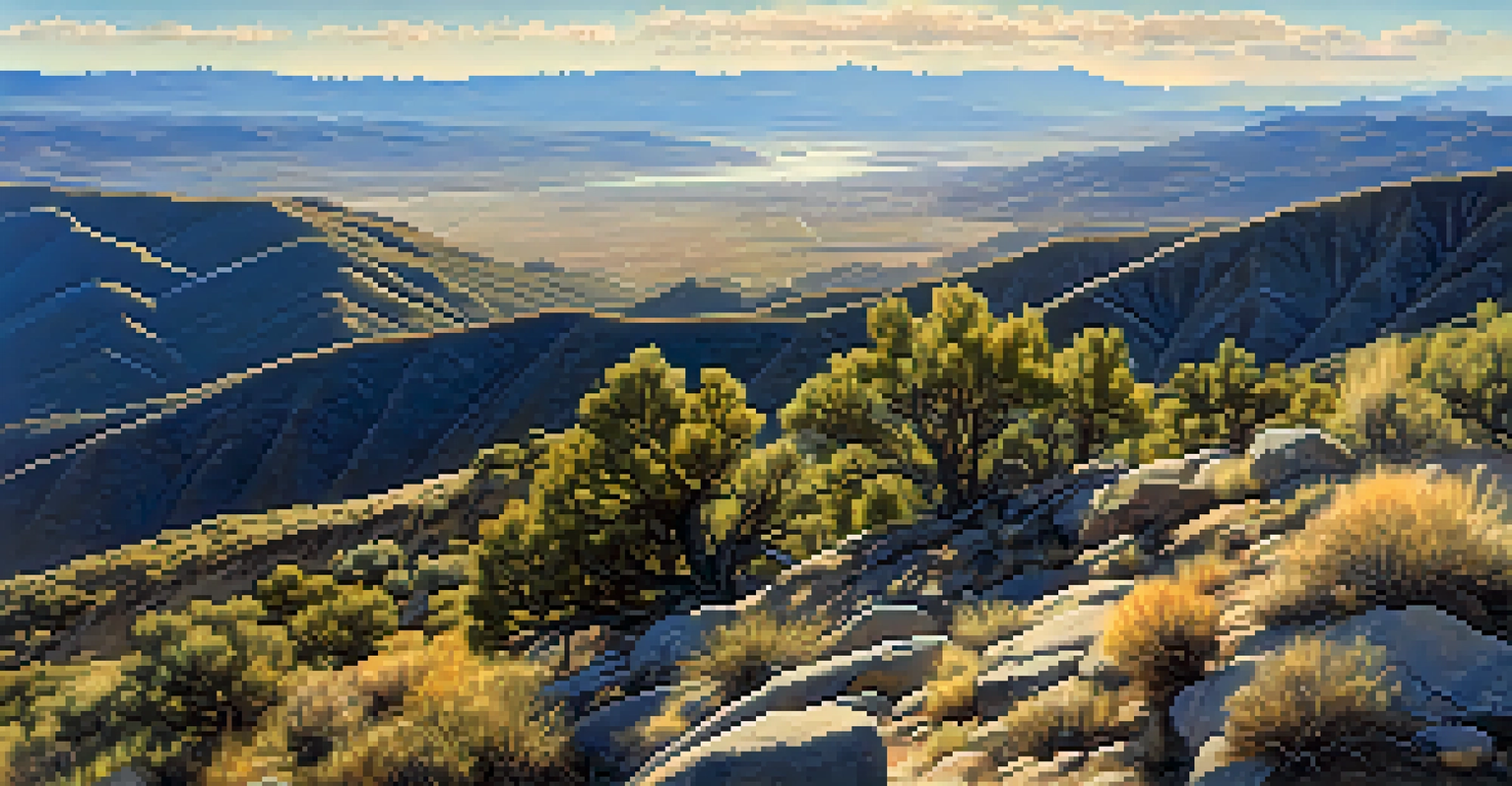Photography Tips for Capturing Reno's Natural Beauty

Choose the Right Time of Day for Stunning Light
The golden hours, just after sunrise and before sunset, are prime times for photography. During these periods, the soft, diffused light adds a magical quality to your images, enhancing the vibrant colors of Reno's landscapes. If you're aiming for dramatic shadows and contrasts, midday can also work, but be prepared to manage harsh lighting.
Photography is the story I fail to put into words.
For instance, if you're shooting at Lake Tahoe, arrive early to catch the sunrise reflecting off the water. This creates a serene mood that can transform a simple landscape into a breathtaking scene. Remember, the right lighting can make or break your photo, so plan your shoots around these golden moments.
Additionally, cloud cover can also create beautiful diffused light, so don’t shy away from overcast days. They can add depth and richness to your photos without the harsh glare of direct sunlight.
Explore Different Angles for Unique Perspectives
When photographing Reno's natural beauty, it's essential to think beyond the standard eye-level shot. Get low to the ground to capture the intricate details of wildflowers, or find a higher vantage point to showcase sweeping vistas. Shifting your perspective can turn an ordinary scene into something extraordinary.

Consider the view from Peavine Peak, where you can capture the vastness of the valley below. By climbing to a higher elevation, you’ll be able to include more of the stunning landscape in your frame, creating a sense of grandeur that captures the essence of Reno’s natural beauty.
Capture Golden Hour Magic
Photographing during the golden hours enhances colors and creates a magical quality in your images.
Don't hesitate to try unconventional angles or framing techniques, like shooting through branches or rocks. This approach adds depth and draws the viewer’s eye to specific details, making your photographs more engaging.
Incorporate Leading Lines to Draw Focus
Leading lines are a powerful compositional tool in photography that can guide the viewer’s eye through the image. In Reno, you can find natural leading lines in trails, rivers, or even the edges of mountains. Utilizing these elements will create a sense of direction and movement in your photos.
You don’t take a photograph, you make it.
For example, while photographing the Truckee River, position yourself so that the riverbank leads the viewer’s gaze toward the stunning backdrop of the Sierra Nevada mountains. This not only makes your composition more dynamic but also emphasizes the beauty of the landscape.
Experiment with different lines in your environment, whether they’re natural or man-made. A winding road or a path through a forest can also serve as an effective leading line, adding depth and context to your images.
Capture Seasonal Changes for Diverse Shots
Reno's natural beauty transforms with the seasons, offering a diverse range of photographic opportunities. Spring brings vibrant wildflowers, summer showcases lush greenery, autumn offers stunning fall colors, and winter blankets the area in snow. Each season tells its own story and can evoke different emotions in your photography.
For instance, capturing the vibrant hues of the changing leaves at Washoe Lake in the fall can create a stunning contrast against the blue water. Conversely, a snow-dusted view of the mountains in winter can convey a sense of calm and tranquility.
Explore Unique Angles
Experimenting with different perspectives can transform ordinary scenes into extraordinary photographs.
Plan your photography outings according to the seasonal changes. By doing so, you can capture the evolving beauty of Reno throughout the year, creating a varied portfolio that reflects the area's natural charm.
Utilize the Rule of Thirds for Balanced Composition
The rule of thirds is a classic photography principle that can help create more visually appealing images. By dividing your frame into three equal parts both horizontally and vertically, you can position key elements along these lines or at their intersections. This technique encourages balance and harmony in your compositions.
For example, when photographing a sunset over the mountains, placing the horizon along the top third of the frame emphasizes the colorful sky while keeping the landscape in focus. This simple adjustment can elevate your photos from ordinary to captivating.
While the rule of thirds is a great guideline, don't feel confined by it. Sometimes breaking this rule can lead to unique and powerful images. Trust your instincts and adjust your composition based on what feels right in the moment.
Experiment with Different Camera Settings and Equipment
Understanding your camera settings is crucial for capturing the beauty of Reno effectively. Experiment with aperture, shutter speed, and ISO to see how they affect your images. For instance, a wide aperture can create a beautiful bokeh effect, blurring the background and bringing your subject into sharp focus.
If you have access to a tripod, use it for long exposure shots, especially when photographing waterfalls or moving clouds. This technique can add a dreamy quality to your landscapes, making them feel ethereal and captivating.
Embrace Seasonal Changes
Capturing the beauty of Reno through its changing seasons offers diverse and emotionally resonant photographic opportunities.
Don't shy away from trying out different lenses as well. A wide-angle lens can help you capture sweeping landscapes, while a telephoto lens can bring distant mountains or wildlife into detailed focus. Each piece of equipment offers unique advantages that can enhance your photos.
Post-Processing: Enhance, Don't Overdo
Post-processing can be a fantastic way to enhance your images, but it’s essential to strike a balance. Use editing software to adjust brightness, contrast, and color saturation, but avoid the temptation to over-edit. A well-edited photo should still look natural and true to the scene you captured.
Consider subtle adjustments, like enhancing the greens of a forest scene without making them look artificial. This helps maintain the integrity of your photograph while still making it pop. A little goes a long way in post-processing.

Lastly, don’t be afraid to experiment with different editing techniques. Each photo is unique, and finding the right adjustments will take practice. Embrace the learning process and enjoy the journey of refining your photography skills.